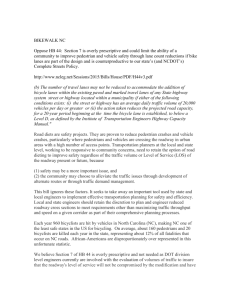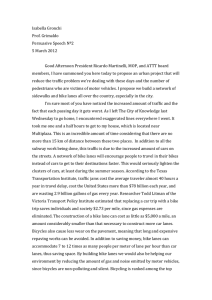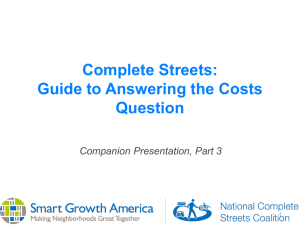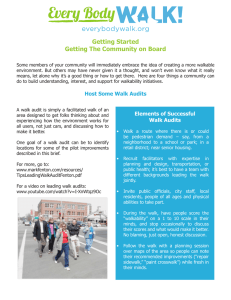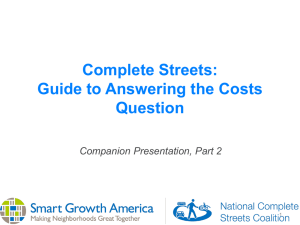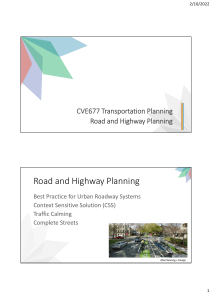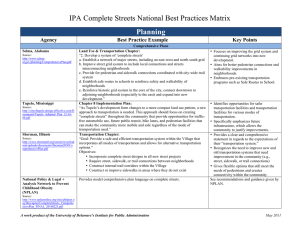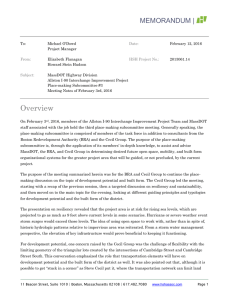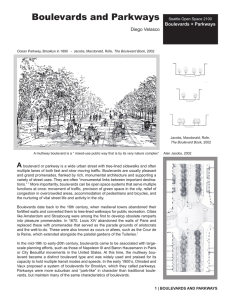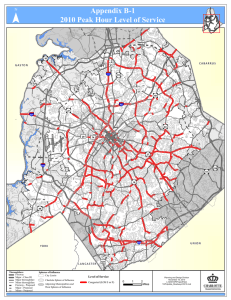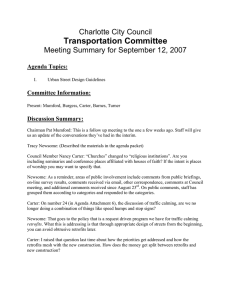Overview of Complete Streets Eileen Gunn Sustainability Manager,
advertisement
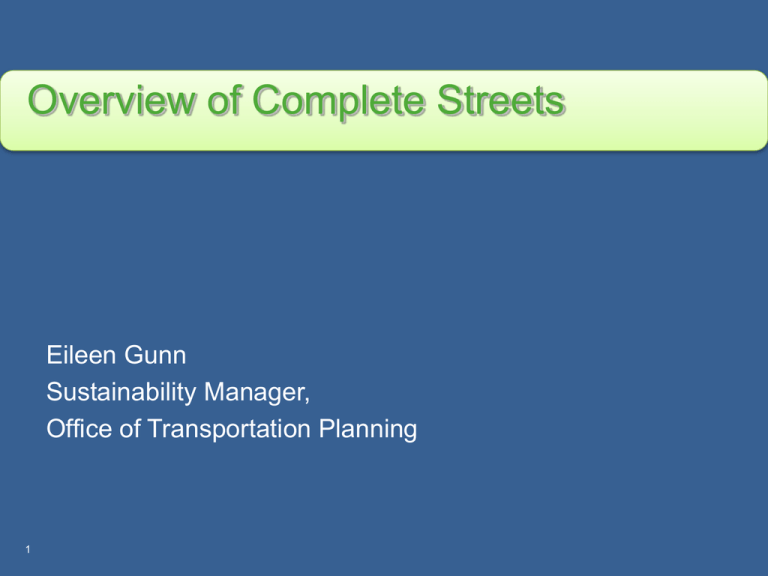
Overview of Complete Streets Eileen Gunn Sustainability Manager, Office of Transportation Planning 1 2 3 Complete Streets is MassDOT’s program for communicating and implementing the comprehensive multi-modal philosophy in MassDOT’s award-winning Project Development and Design Guide. 6 Three key objectives: Multimodal Consideration Context Sensitive Design Clear Project Development Process Complete Streets Best captured in Guiding Principles of the Highway Project Development & Design Guide (Guidebook ) Multimodal Consideration — to ensure that the safety and mobility of all users of the transportation system (pedestrians, bicyclists and drivers) are considered equally through all phases of a project so that even the most vulnerable (e.g., children and the elderly) can feel and be safe within the public right of way. This includes a commitment to full compliance with sate and federal accessibility standards for people with disabilities. Context Sensitive Design — to incorporate, throughout project planning, design, and construction, the overarching principles of Context Sensitive Design (a collaborative, interdisciplinary approach that involves all constituents to develop a transportation facility that fits its physical setting and preserves scenic, aesthetic, historic and environmental resources, while maintaining safety and mobility for all users). 8 Complete Streets Concepts Roadway Classification vs. Context Design Speed Selection Mobility Considerations Lane Widths On-Street Bike Lanes Road Diets Intersection Curb Radii Pedestrian Facilities Pedestrian Signalization Transit Considerations 9 Design Guide requirements Pedestrian and bicycle accommodation included on all projects Plans posted online for 25% design review Recipients of highway access permits are subject to Design Guide standards Recipients of state funding (PWED, TOD, etc.) must adhere to Design Guide standards We know how to build right Summer St., Arlington Accommodating all users There’s room; it needs to be recaptured 13 Anderson Bridge, Cambridge: Before Anderson Bridge, Cambridge: After Cambridge: Before Cambridge: After Mass Ave., Arlington: Before Mass Ave., Arlington: After Route 134, Dennis: Before Route 134, Dennis: After Award Winning in Numerous Categories: Transportation Environmental Public Works Historic Preservation Planning Context Sensitivity Highway Design Conventional design – from the inside out 16’ 12’ 16’ 12’ Add up (wide) travel lane, run out of ROW Result: one narrow curbside sidewalk 16’ 23 Proposed design – from the outside in 6’ 8’ 6’ 11’ 11’ 6’ Add up desirable elements, fit in ROW; result: nice sidewalks, bike lanes, adequate travel lanes 8’ 6’ 24 Proposed design – from the outside in 6’ 8’ 6’ 11’ Approaches to cross-section formulation are presented from 11’ right-of-way 6’ edge 8’ to edge, 6’ rather than the more traditional method from center line out. Design Guide, p. 5-2 Add up desirable elements, fit in ROW; result: nice sidewalks, bike lanes, adequate travel lanes 25 Do we have to widen roads to fit everything? 26 Challenges to Achieving Complete Streets Ownership of the roadway system Maintenance of sidewalks Context sensitive
